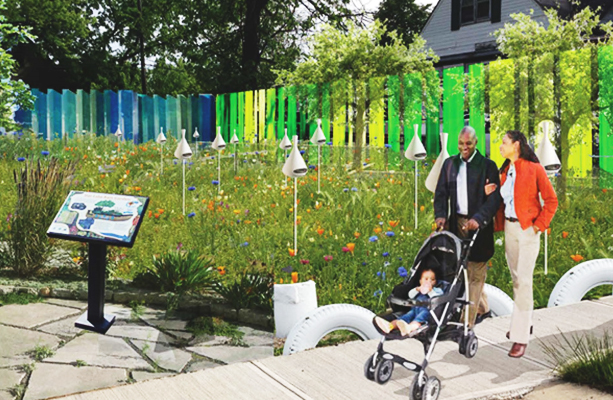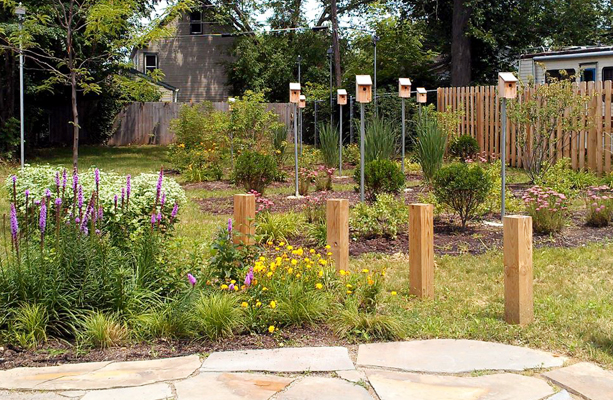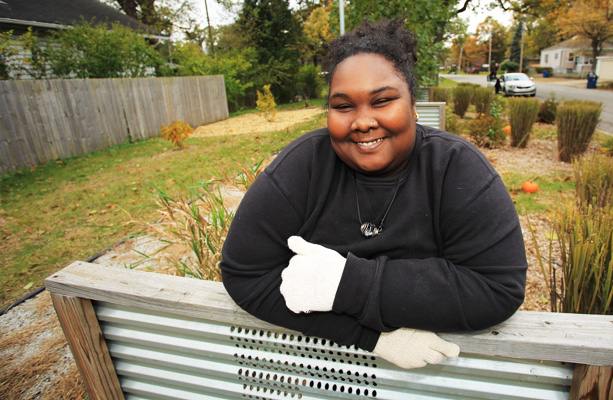Prototyping Great Lakes—Friendly Neighborhoods of the Future
Vacant to Vibrant: Stormwater Solutions that Fight Urban Blight
- By Randall Hyman
In recent decades, cities across the Great Lakes region have been hit with the triple threat of heavier precipitation, aging infrastructure, and weak economies. The infrastructure in many cities needs costly investment and affordable solutions are in high-demand as communities struggle with stagnant economies and slow-growing, or even shrinking, populations. And in cities hard-hit by job loss and foreclosure, abandoned properties blight neighborhoods with clear evidence of decline.
Seeking Green Solutions
In 2012, three innovators from the Cleveland Botanical Garden drove from Milwaukee to Toronto to see how Great Lakes cities were repurposing vacant lots.
“Around the same time, the EPA and USGS had been studying how small residential vacant lots could absorb stormwater,” recalls Sandra Albro of their Great Lakes tour, “and they actually found that they absorbed larger quantities of stormwater than expected.”
Taking a cue from those studies and borrowing from their own successes with urban farming in Cleveland, Albro and her colleagues had an idea. In contrast to expensive, large-scale sewer remediation projects, they wondered if a way to undo urban blight while also controlling stormwater was to unravel it the same way it evolved: lot by lot, block by block. The hope was that small parcels of improvement would inspire locals and spread change from within neighborhoods.
In 2013, with an investment of $902,000 from the Great Lakes Protection Fund, the trio launched the Vacant to Vibrant (V2V) project in Cleveland, Gary, and Buffalo, focusing on placing green infrastructure to attain not only environmental, but also social and economic benefits.


“We are overwhelmed in terms of managing vacant spaces,” says Brenda Scott-Henry director of Gary’s Environmental Affairs division, “but we can’t give up.”
Working closely with Albro, Scott-Henry has grown fond of the three V2V lots in Aetna, a planned community for steel workers that is now one of Gary’s poorer neighborhoods. She walks amid rain gardens and landscaping swales in a park-like lot on a corner where a burnt-out, two-bedroom home once stood. Five washboards stenciled with the letters A-E-T-N-A stand in a row amid plantings that are both decorative and useful.

“Topography is important,” she says. “You see the slope here? If it rains too much, the water will flow right into that rain garden and stay out of the street. There’s a lot of opportunity associated with these properties.”

Cover Photo: Rendering by Jason Kentner and Sean Burkholder
—
Start a Conversation
At the Fund, our goal is to build something—together—that delivers impact. You have an idea and a strategy in mind and we have a basin-wide perspective and experience launching new initiatives. We strongly encourage you to contact us to discuss an idea, whether fully formed or not, as a first step.
Email us at startaconversation@glpf.org